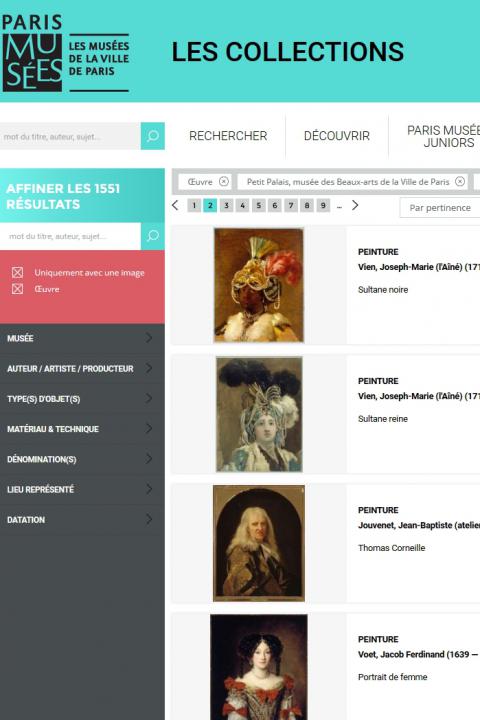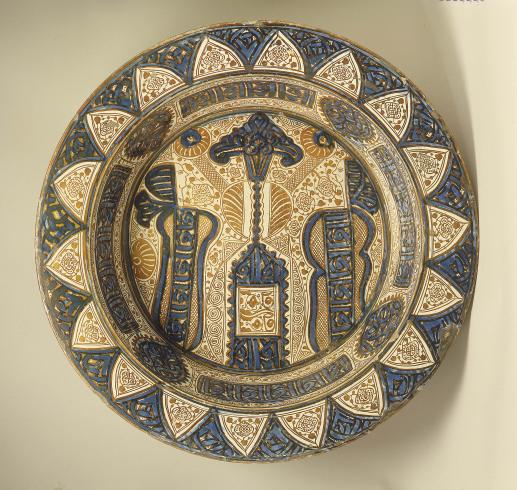Influenced by a technique perfected in the Middle East around the 9th century, Spain, which was under Muslim rule, witnessed the birth of an art form in the Middle Ages which peaked in the 15th and 16th centuries: Hispano-Moorish ceramics.
These consisted of earthenware, a type of clay covered in opaque white tin glaze forming a base for painted decoration. This lustre decoration with metallic hints obtained with copper oxide or silver pigments is the hallmark of these luxury creations.
The originality of Hispano-Moorish ceramics lies in the Islamic origins of the ornamentation: inscriptions in pseudo-Kufic script, trees of life and palmettes, etc.
The Petit Palais bowl is exceptional is this respect as the decoration is figurative: two women facing each other in profile on either side of a tree of life.

City of Paris municipal collection's website
The collections portal can be used to search the collections of Paris’s 14 municipal museums (approximately 336,000 works, including 43,000 belonging to the Petit Palais).
It is also possible to download around 12,000 images of the museum’s works free of charge.
Access the Museums of the City of Paris collections portal
Extern databases
Discover a selection of databases online presenting works from the Petit Palais or documents concerning the history of the museum.

